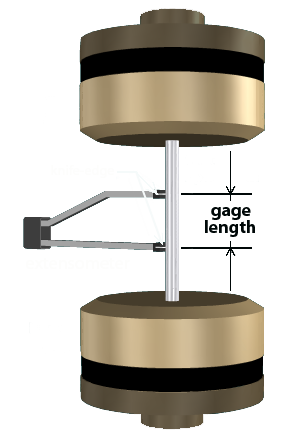
An instrument called an extensometer is used to measure the elongation in the tension test specimen. The extensometer has two knife-edges, which are clipped to the test specimen (clips not shown). The initial distance between knife-edges is called the . As tension is applied, the extensometer measures the elongation that occurs in the specimen over the gage length.
Extensometers are capable of very precise measurements - elongations as small at or They are available in a range of gage lengths, with the most common models ranging from to (in US units) and from to (in SI units).